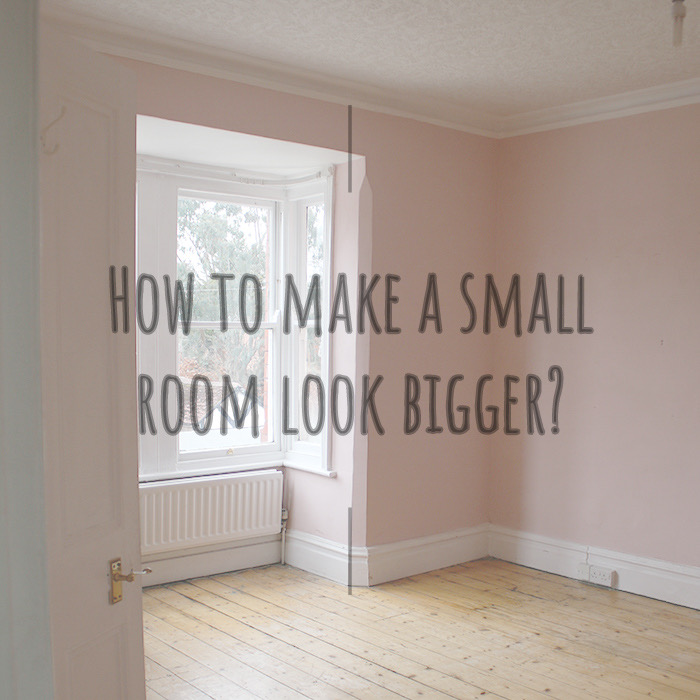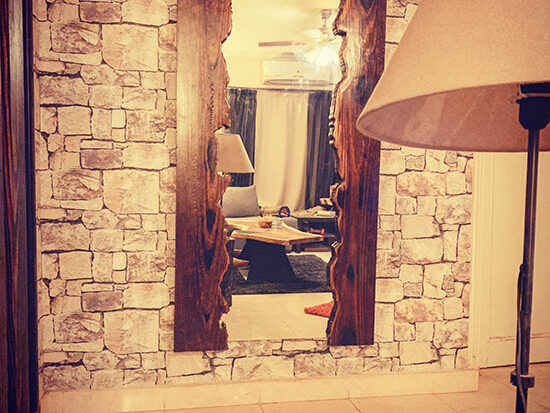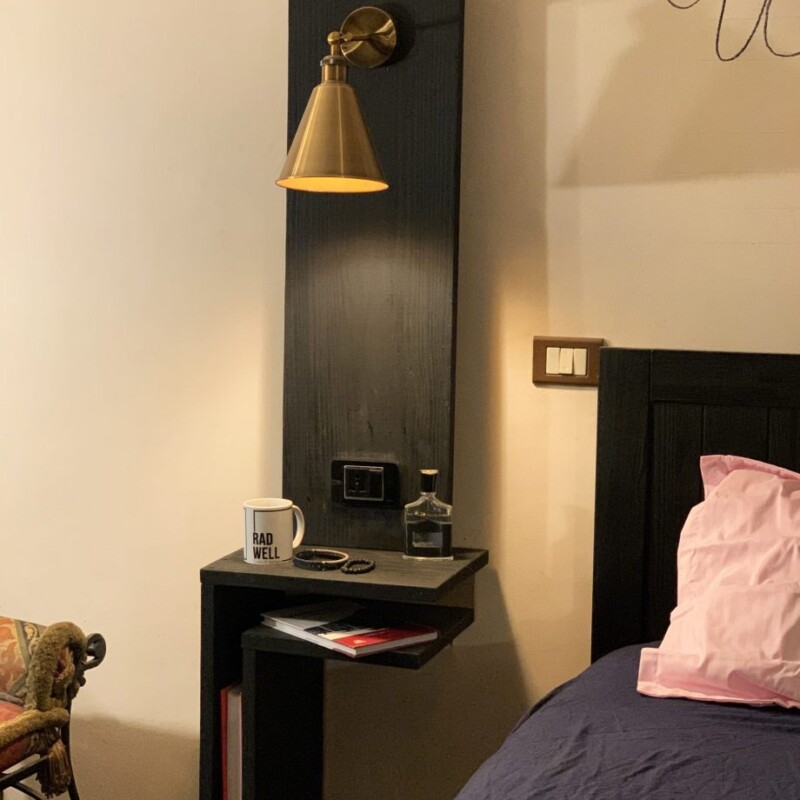How to make a small room look bigger?

Definitely, we are not going to expand the actual room’s dimensions. But there are some tricks regarding colors, a few twists in decoration choices, rearranging stuff, and details in furniture pieces that can help to reach the illusion of roomy place and wider space than it is.
On the other side, you may already stuck with some pieces that make you experience the feeling of the closed limited room, while your actual one is not.
So, let’s walk you through the things that will make a real difference.
We’ll start with the common one “Mirrors”
Natural light is really significant if you care about that larger space look, obviously, that’s why places with small or no windows seem smaller, but fortunately you can use wall mirrors as a substitute for windows in order to create the illusion feel of natural light.
It is even more effective if you hang a mirror where it reflects natural/artificial light, or outdoor view.
-
 Live edge wooden wall mirrorEGP8,200.00
Live edge wooden wall mirrorEGP8,200.00
Grounding
Accomplish a balanced design by combining different visual weight items.
Having only the furniture which too close to the ground is enough reason to block your room and cramped the space.
Utilize pieces with short or no legs, and close to the floor, hence they look heavy furniture, coupled with the long exposed legged or hanged ones which appear to be lighter.
For instance, if you have a couch with flat base, add a legged coffee table. As a result, you’ll create the view of the open space with visually lighter items.
Similarly, when you have a flat based bed, you better get hanged or legged nightstands to allow more light and air and create the sense of roominess.
The One Big Wall Art
If you have limited space, go for the one big piece when it comes to the wall art, instead of the gallery wall with many small pieces.
Limiting the wall art to one big item creates focal point and draws the attention to a center, thus it fools the eye to see bigger room. While many small pieces distracting the eye, and lead to a sense of busy and crowded space.
Lighting tricks
Layering Lights
Don’t rely on one layer or single source of light, like on center chandelier, which will focus the light spot on certain point of the floor. Conversely, multiple layers, such as floor lamps in the corners, table lamps on end tables or sideboards, and wall sconces which will spread the light around the room. Consequently open up the space.
Long Pendants
Hanging lamps with a tall pendant highlight the height of the room rather than the small floor. so, you better take advantage of a high ceiling if you have one.
Paint Colors
Lighter colors in the ceiling elevate its height, thereby fooling the eye for seeing the room bigger. Generally, painting with different, dark colors even for walls work in favor of the wider space in order to delineate it and make it feel cozy, warm and organized. Whereas, small rooms appear more spacious in one light color. It is the fact that when you map out the walls with different colors, the eye make a stop on each wall edge where the first color end, and start to feel limited.
In contrast one color eliminates boundaries and makes space seem extended.
[simple-author-box]

